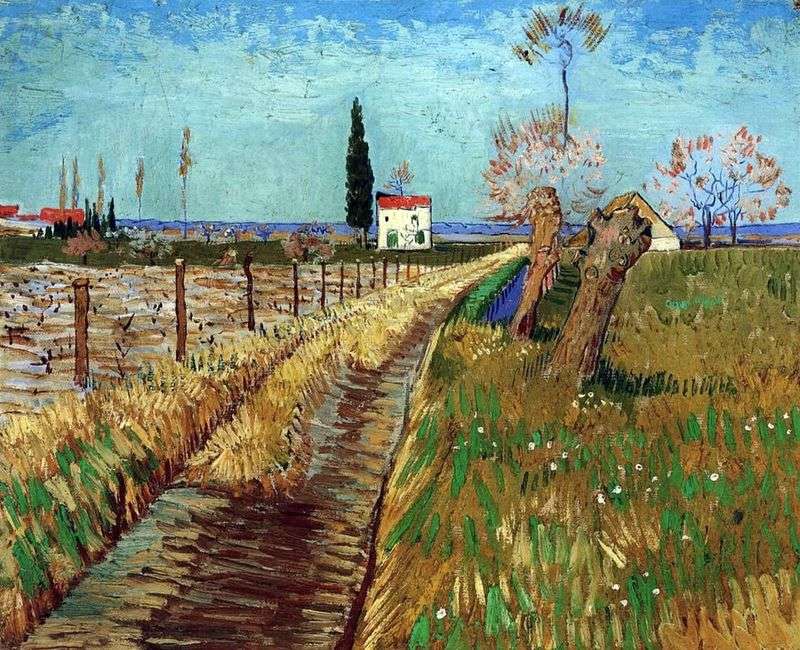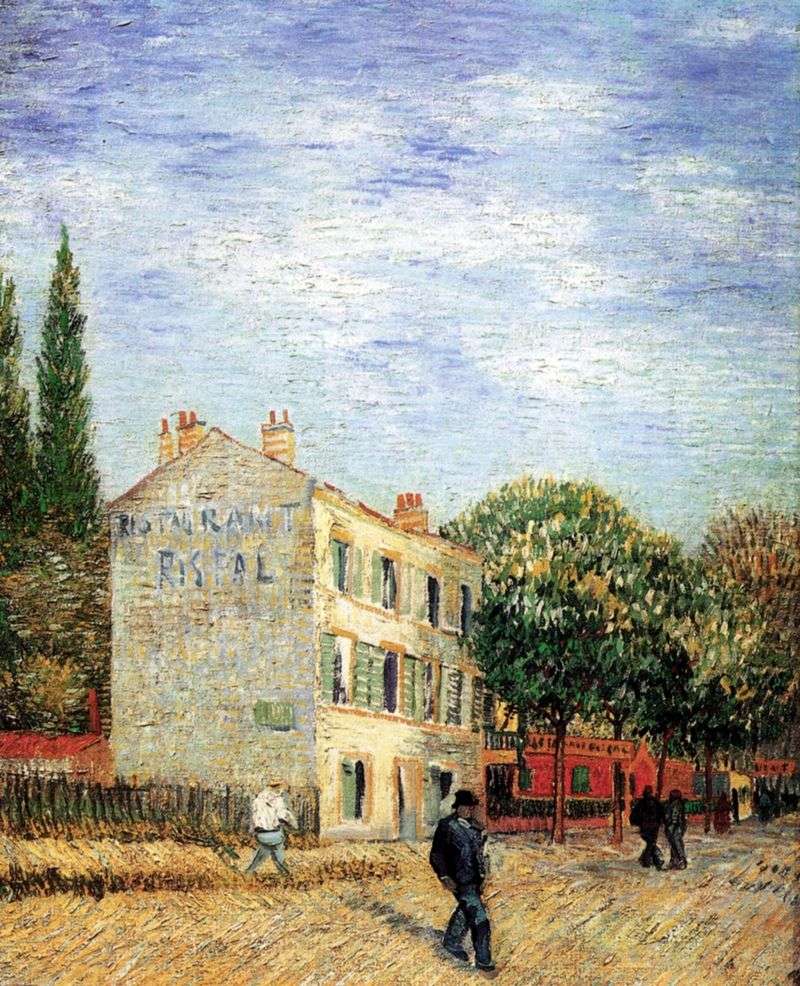
In 1888, Van Gogh went on a trip to the Mediterranean Sea. Stopping in the small fishing village of Saint-Marie, he was engaged in sketches and sketches from nature. Here he was inspired by everything: the settlement itself, small fishing boats, and, of course, the sea. The Mediterranean Sea was particularly charming to Van Gogh. In a letter to his brother, he described how at every moment the water changes its color: from blue it turns green, lilac, and then she has a pinkish tide…
In his painting, the artist tried to “catch” this variability. The main theme of the landscape, he made colorful overflows of a variety of colors and shades. Water is written in green, blue and orange strokes, which, replacing each other, create an infinite variety of colors. This combination makes the seascape unusually alive. Van Gogh fully managed to convey the beauty of the sea, expressed in its constant movement. In the foreground, the artist painted massive crests of waves, and the main compositional accent was made by a small fishing boat.
Below Van Gogh put a large, uncharacteristic red signature for himself. He did this not accidentally, but in order, in his words, to create a contrast to the green color of the water.
 Fishing boats on the beach from Sainte-Marie (watercolor) by Vincent Van Gogh
Fishing boats on the beach from Sainte-Marie (watercolor) by Vincent Van Gogh Boats in Saint-Marie by Vincent Van Gogh
Boats in Saint-Marie by Vincent Van Gogh Blooming Garden by Vincent Van Gogh
Blooming Garden by Vincent Van Gogh A path in a field in willows by Vincent Van Gogh
A path in a field in willows by Vincent Van Gogh Still life with apples by Vincent Van Gogh
Still life with apples by Vincent Van Gogh Still life with pears by Vincent Van Gogh
Still life with pears by Vincent Van Gogh Restaurant Rispal in Anjera by Vincent Van Gogh
Restaurant Rispal in Anjera by Vincent Van Gogh Plowed field by Vincent Van Gogh
Plowed field by Vincent Van Gogh